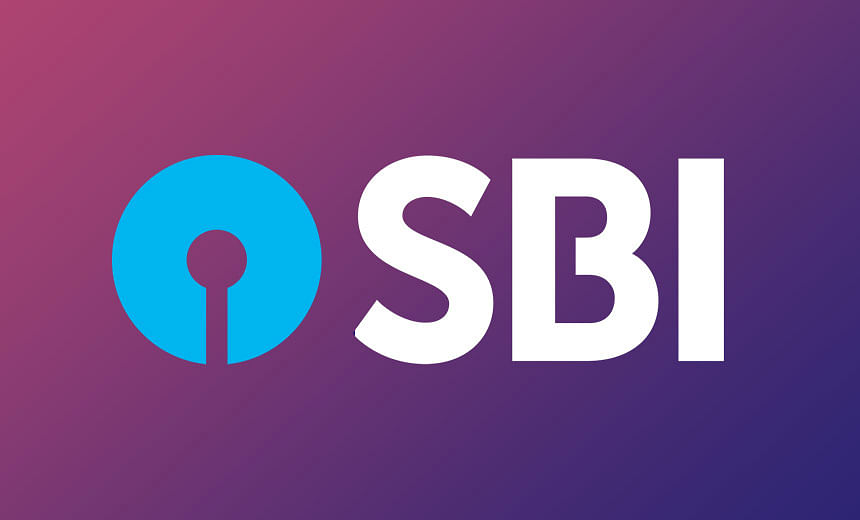
CMAT and GPAT 2019
The application process for the Graduate Pharmacy Aptitude Test (GPAT) 2020 is to conclude today i.e. November 30, 2019, by the National Test Agency (NTA).
The entire schedule is available on the official website of NTA i.e. gpat.nta.nic.in.
The candidates who wish to appear for the exam can visit the official website and fill the form.
The GPAT examination has been scheduled to be conducted on January 24, 2020. The registration process for the same commenced from November 1, 2019.
The candidates can download the admit card from the official website on December 24. The result for GPAT examinations will be announced on February 3, 2020.
GPAT 2020: Check the schedule
- Registration Dates: November 1 to 30
- Downloading of Admit Cards: December 24
- Dates of Examinations: January 24
- Declaration of results: February 3, 2020.
GPAT 2020: Check the Latest Exam Pattern
The medium of Question Paper shall be in English only.
GPAT is an online computer-based test of 3 hours duration with 125 objective type questions.
Important Note:
i) Each question carries 04 (four) marks.
ii) For each correct response candidate will get 04 (four) marks.
iii) For each incorrect response 01 (one) mark will be deducted from the total score.
iv) To answer a question, the candidates need to choose one option corresponding to the correct option.
v) However, after the process of challenges of the key, if more than one option is found to be correct then the multiple correct options will be given the four marks (+4).
Any incorrect option marked will be given the minus one mark (-1). Un-answered/Un-attempted will be given no marks. In case, a question is dropped/ignored, all candidates will be given four marks (+4) irrespective of the fact whether the question has been attempted or not attempted by the candidate.
GPAT 2020: Check the Latest Syllabus
PHYSICAL CHEMISTRY
1. Composition & physical states of matter
2. Colligative Properties
3. Thermodynamics
4. Refractive index
5. Solutions
6. Electrochemistry
7. Ionic equilibrium
8. Kinetics
PHYSICAL PHARMACY
1. Matter, properties of matter
2. Micromeritics and powder rheology
4. Viscosity and rheology
5. Dispersion systems
6. Complexation
7. Buffer
8. Solubility
ORGANIC CHEMISTRY
1. General principles
2. Different classes of compounds
3. Protection & deprotection of groups
4. Aromaticity & chemistry of aromatic compounds
5. Different aromatic classes of compounds
6. Polycyclic aromatic hydrocarbons
7. Carbonyl Chemistry
8. Heterocyclic Chemistry
9. Bridged rings
10. Kinetic & thermodynamic control
11. Stereochemistry
12. Carbohydrates
13. Amino acids & proteins
14. Pericyclic reactions
PHARMACEUTICAL CHEMISTRY
I. Pharmaceutical Inorganic Chemistry
1. Pharmaceutical Impurities
2. Monographs
3. Isotopes
4. Dentifrices, desensitizing agents, & anticaries agents
II. Medicinal Chemistry
5. Therapeutic classes of drugs
6. Various classes of therapeutic agents
7. Different classes of therapeutic drugs
8. Different classes of therapeutic drugs
9. Introduction to quantitative structure-activity relationship. [QSAR]. Linear free energy relationship. Hammett's equation. Use of substituent constants such as π, σ, Es, & physicochemical parameters such as pKa, partition coefficient, Rm, chemical shifts, molar refractivity, simple & valance molecular connectivity to indicate electronic effects, lipophilic effects, & steric effects. Introduction, methodology, advantages & disadvantages/limitations of Hansch analysis.
10. Asymmetric synthesis. Chirality, chiral pool, sources of various naturally available chiral compounds. Eutomers, distomers, eudismic ratio. Enantioselectivity & enantiospecificity. Enantiomeric & diastereomeric excess. Prochiral molecules.
Asymmetric synthesis of captopril & propranolol.
11. Combinatorial chemistry. Introduction & basic terminology. Databases & libraries. Solid phase synthesis technique. Types of supports & linkers, Wang, Rink, & dihydropyran derivatized linkers. Reactions involving these linkers. Manual parallel & automated parallel synthesis. Houghton's tea bag method, micromanipulation, recursive deconvolution. Mix & split method for the synthesis of tripeptides. Limitations of combinatorial synthesis. Introduction to throughput screening.
PHARMACEUTICS
1. Pharmacy Profession & Introduction to Pharmaceuticals
2. Introduction to dosage form
3. Sources of drug information
4. Allopathic dosage form
5. Crude extract
6. Allergenic extract
7. Biological products
8. Pharmaceutical Plant, location, layout
9. Dosage Form Necessities and Additives
10. Powders
11. Capsules
12. Tablets
13. Parenterals - product requiring sterile packaging
14. Suspensions
15. Emulsions
16. Suppositories
17. Semisolids
18. Liquids(solutions, syrups, elixirs, spirits, aromatic water, liquid for external uses)
19. Pharmaceutical Aerosols
20. Ophthalmic preparations
21. Preformulations
22. Stability of formulated products
23. Prolonged Action Pharmaceuticals
24. Novel Drug delivery system
25. GMP and Validation
26. Packaging Materials
27. Cosmetics
28. Pilot plant scale-up techniques
PHARMACOLOGY
1. General Pharmacology
2. Nerohumoral transmission in autonomic and central nervous system
3. Pharmacology of peripheral nervous system
4. Pharmacology of central nervous System
5. Pharmacology of cardiovascular system
6. Drugs acting on urinary system
7. Drugs acting on Respiratory system
8. Pharmacology of Endocrine system
9. Chemotherapy
10. Autacoids and their Antagonists
11. Pharmacology of drug acting on the gastrointestinal tract
12. Chronopharmacology
13. Immnopharmacology
14. Vitamins & Minerals
15. Principles of toxicology
PHARMACOGNOSY
1. Introductory Pharmacognosy
2. Classification of crude drugs
3. Factors influencing quality of crude drugs
4. Techniques in microscopy
5. Introduction to phytoconstituents
6. Principles of plant classification
7. Pharmaceutical aids
8. Animal products
9. Plant products
10. Toxic drugs
11. Enzymes
12. Natural pesticides and insecticides
13. Adulteration and evaluation of crude drugs
14. Quantitative microscopy
15. Biogenetic pathways
16. Carbohydrates & lipids
17. Tannins
18. Volatile oils
19. Resinous drugs
20. Glycosides
21. Alkaloids
22. Extraction and Isolation Techniques
23. Phytopharmaceuticals
24. Quality control and Standardization of herbal drugs
25. Herbal formulations
26. Worldwide trade of crude drugs and volatile oils
27. Herbal cosmetics
28. Traditional herbal drugs
29. Plants based industries and research institutes in India
30. Patents
31. Ayurvedic system of medicine
32. Homeopathic system of medicine
PHARMACEUTICAL ANALYSIS
1. Importance of quality control in pharmacy
2. Acid-base titrations
3. Non-aqueous titrations
4. Oxidation-reduction titrations
5. Precipitation titrations
6. Complexometric titrations
7. Gravimetry
8. Extraction techniques
9. Potentiometry
10. Miscellaneous methods of analysis
11. Calibration
12. General principles of spectroscopy
13. Ultraviolet-visible Spectrometry
14. Spectrofluorimetry
15. Flame photometry & atomic absorption spectrometry
16. Infrared spectrometry
17. Proton nuclear magnetic resonance spectrometry
18. Mass spectrometry
19. Polarography
20. Nephelometry & Turbidimetry
21. Chromatography
22. Miscellaneous
BIOCHEMISTRY
1. Cell
2. Carbohydrates
3. Proteins
4. Lipids
5. Vitamins
6. Biological oxidations & reductions
7. Enzymes
8. Nucleic acids
9. Hereditary diseases.
BIOTECHNOLOGY
1. Plant Cell and Tissue Culture
2. Animal Cell Culture
3. Fermentation Technology and Industrial Microbiology
4.Recombinant DNA Technology
5. Process and Applications
6. Biotechnology Derived Products
MICROBIOLOGY
1.Introduction to Microbiology
2.Microscopy and staining technique
3.Biology of Microorganisms
4.Fungi and Viruses
5.Aseptic Technique
6.Sterilization & Disinfection
7.Microbial spoilage
9.Vaccines & Sera
10.Microbial Assay
PATHOPHYSIOLOGY
1.Basic principles of cell injury and adaptation
2.Basic mechanisms of inflammation and repair
3. Disorders of fluid, electrolyte and acid-base balance
4. Disorders of homeostasis: white blood cells, lymphoid tissues, and
red blood cells related diseases.
5. Immunopathology including amyloidosis
6. Infectious diseases
7. Neoplastic diseases
8. Pathophysiology of common diseases
9. Laboratory tests for Liver function tests and kidney function tests
BIOPHARMACEUTICS AND PHARMACOKINETICS
1.Bio-pharmaceutics
2.Bio-availability & Bio-equivalence
3.Bio- pharmaceutical statistics
CLINICAL PHARMACY AND THERAPEUTICS
1. General Principles, preparation, maintenance, analysis of observational records in clinical
Pharmacy.
2. Clinical trials, type and phases of clinical trials, placebo, ethical and regulatory issues
including Good clinical practice in clinical trials.
3. Therapeutic drug monitoring, adverse drug reaction (ADR), types of ADR, Mechanism of
ADR. Drug interaction, Monitoring and reporting of ADR and its significance.
4. Drug information services, Drug interactions.
5. Drug interaction in pediatric and geriatric patients, drug treatment during pregnancy,
lactation and menstruation.
6. Pharmacovigilance, Therapeutic drug monitoring, Neutraceuticals, essential drugs and
rational drug usage.
7. Age-related drug therapy: concept of posology, drug therapy for neonates, pediatrics and
geriatrics. Drugs used in pregnancy and lactation.
8. Drug therapy in gastrointestinal, hepatic, renal, cardiovascular and respiratory Disorders.
9. Drug therapy for neurological and psychological disorders.
10. Drug therapy in infections of respiratory system, urinary system, infective meningitis, TB,
HIV, malaria and filaria.
11. Drug therapy for thyroid and parathyroid disorders, diabetes mellitus, menstrual cycle
disorders, menopause and male sexual dysfunction.
12. Drug therapy for malignant disorders like leukemia, lymphoma and solid tumors.
13. Drug therapy for rheumatic, eye and skin disorders.
HUMAN ANATOMY & PHYSIOLOGY
1. Cell physiology
2. The Blood
3. Gastrointestinal tract
4. Respiratory System
5. Autonomic nervous system
6. Sense organs
7. Skeletal System
8. Central Nervous system
9. Urinary System
10. Endocrine Glands
11. Reproductive System
12. Cardiovascular system
13. Lymphatic system
PHARMACEUTICAL ENGINEERING
1. Fluid flow
2. Heat transfer
3. Evaporation
4. Distillation
5. Drying
6. Size reduction and size separation
7. Extraction
8. Mixing
9. Crystallization
10. Filtration and Centrifugation
11. Dehumidification and humidity control
12. Refrigeration and air conditioning
13. Material of constructions
14. Automated process control systems
15. Industrial hazards & safety precautions
PHARMACEUTICAL MANAGEMENT
1. Introduction to management
2. Planning and Forecasting
3. Organization
4. Research Management
5. Inventory Management
6. Communication
7. Marketing Research
8. Leadership and motivation
9. Human resource and development (HRD)
10. GATT
11. World trade organization (WTO) and trade-related intellectual property rights
(TRIPS)
12. Standard institutions and regulatory authorities
PHARMACEUTICAL JURISPRUDENCE
1. Historical background Drug legislation in India, Code of Ethics for Pharmacists.
2. The Pharmacy Act 1948 (inclusive of recent amendments).
3. Drugs and Cosmetics Act 1940, Rules 1945, including New Drug applications.
4. Narcotic Drugs and Psychotropic Substances Act, and Rules thereunder.
5. Drugs and Magic Remedies (Objectionable Advertisements) Act 1954.
6. Medicinal and Toilet Preparations (Excise Duties) Act 1955, Rules 1976.
7. Medical Termination of Pregnancy Act 1970 and Rules 1975.
8. Prevention of Cruelty to Animals Act 1960.
9. Drug (Price Control) Order.
10. Shops and Establishment Act.
11. Factory Act.
12. Consumer Protection Act.
13. Indian Pharmaceutical Industry- An Overview.
14. Industrial Development and Regulation act 1951.
15. Introduction to Intellectual Property Rights and the Indian Patent Act 1970.
16. An Introduction to Standard Institutions and Regulatory Authorities such as BIS,
ASTM, ISO, TGA, USFDA, MHRA, ICH, WHO.
17. Minimum Wages Act 1948.
18. Prevention of Food Adulteration Act 1954 and Rules
DISPENSING & HOSPITAL PHARMACY
1. Introduction to laboratory equipment, weighing methodology, handling of
prescriptions, labeling instructions for dispensed products.
2. Posological calculations involved in the calculation of dosage for infants. Enlarging
and reducing formula, displacement value.
3. Preparations of formulations involving allegation, alcohol dilution, isotonic solution.
4. Study of current patent and proprietary products, generic products and
selected brand products, indications, contraindications, adverse drug reactions,
available dosage forms and packing of Antihypertensive drug, Antiamoebic drugs, etc.
8. Compounding and dispensing of following prescriptions
9. Reading and counseling of prescriptions from the clinical practice.
Important Links:
Click Here to Visit the Official Website
Click Here to Read Detailed Notification
Click Here for NTA GPAT 2019 Detailed Syllabus









